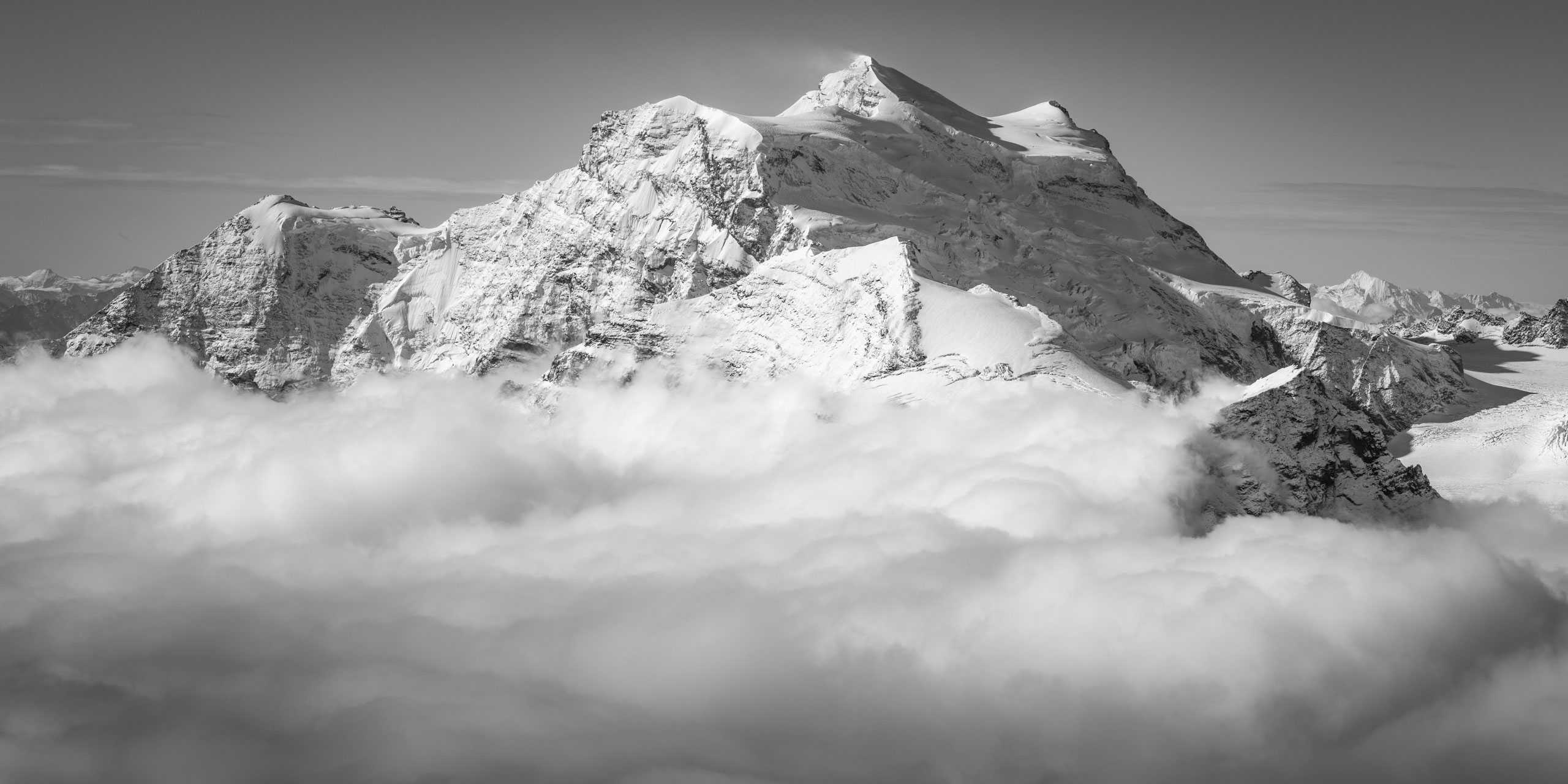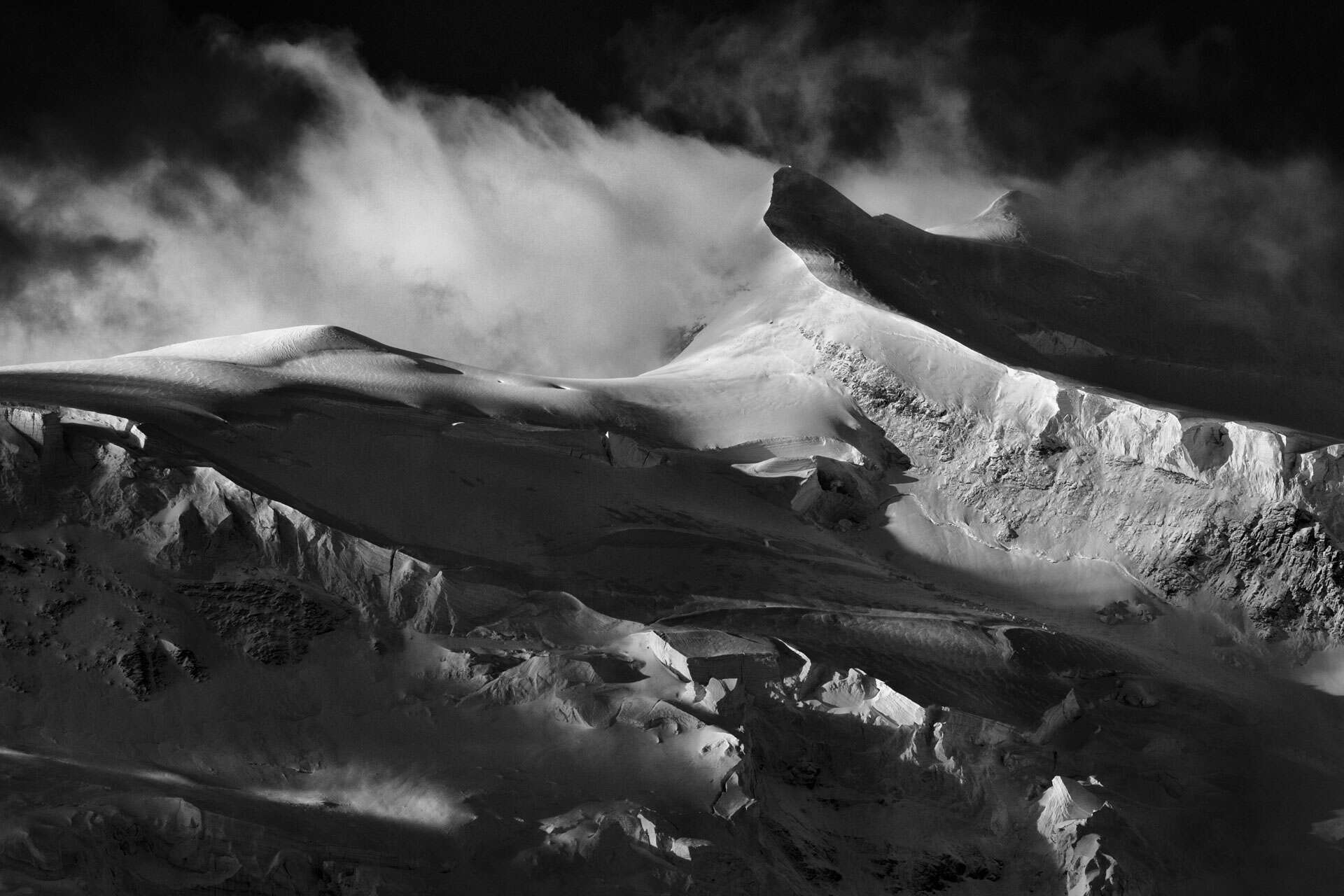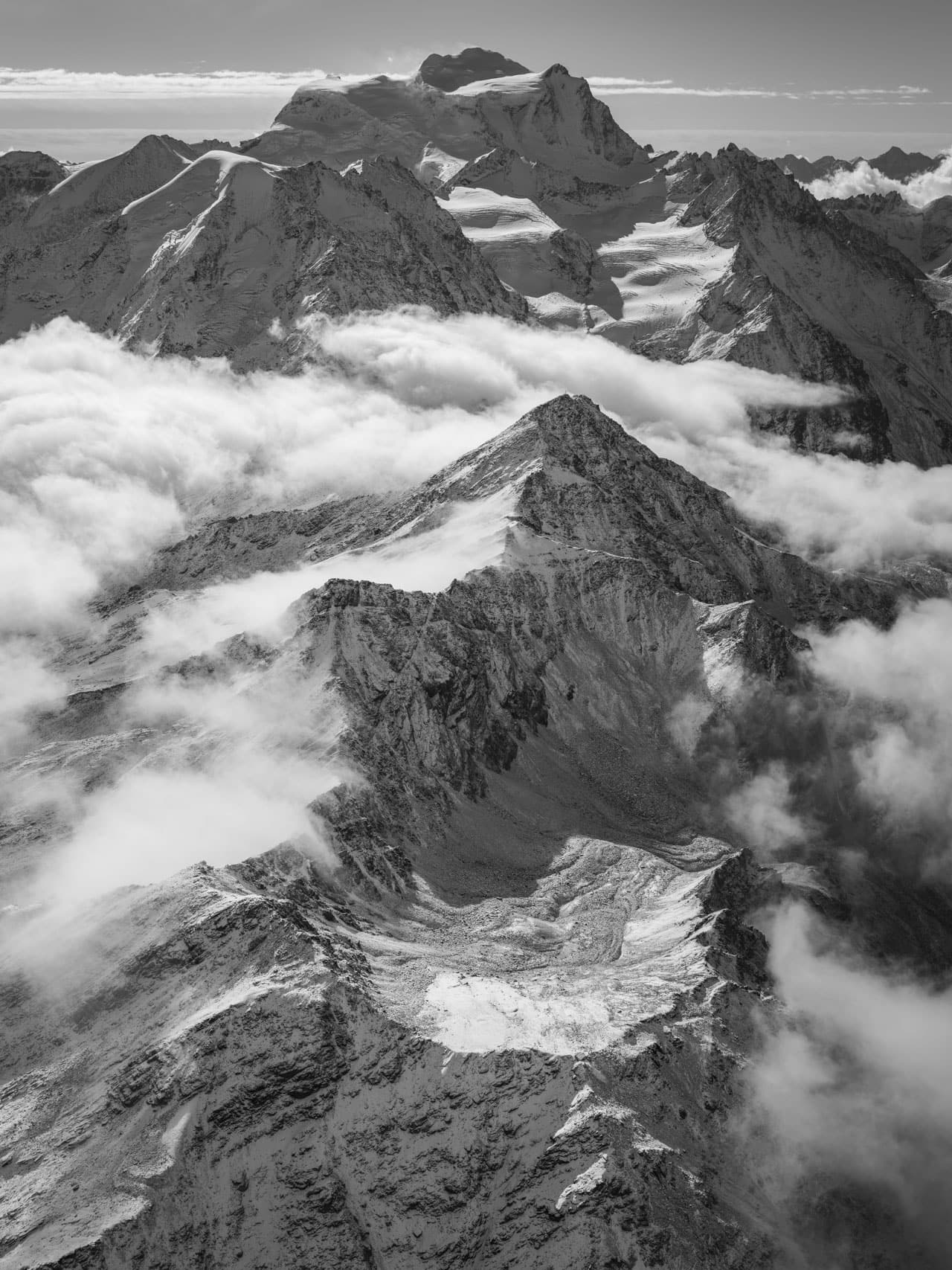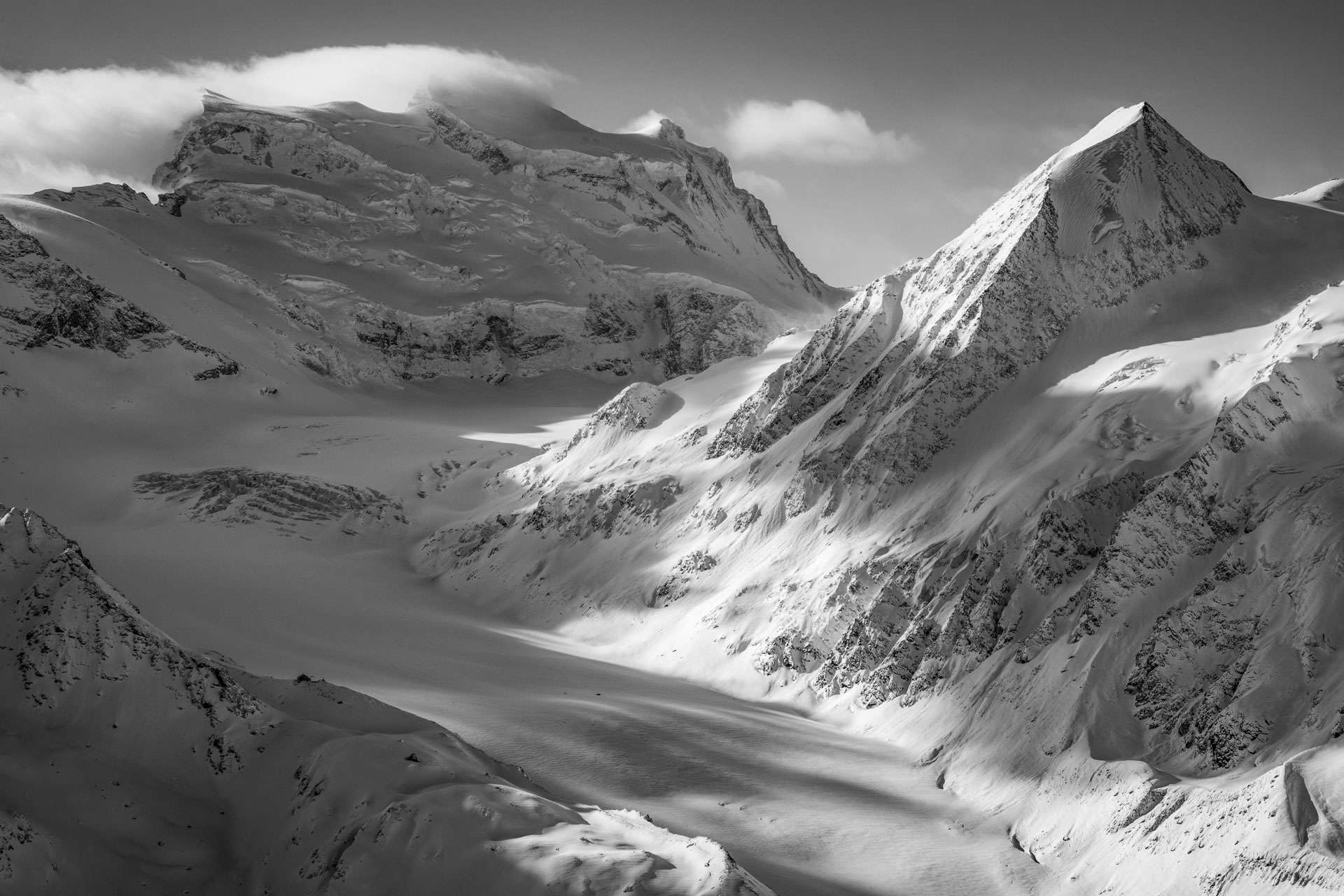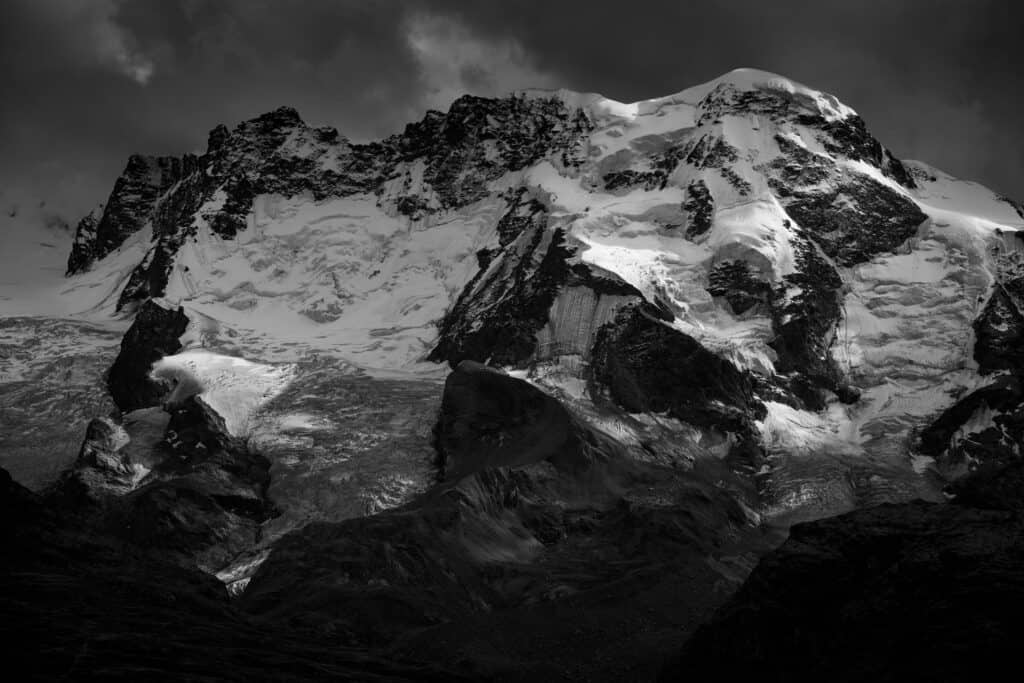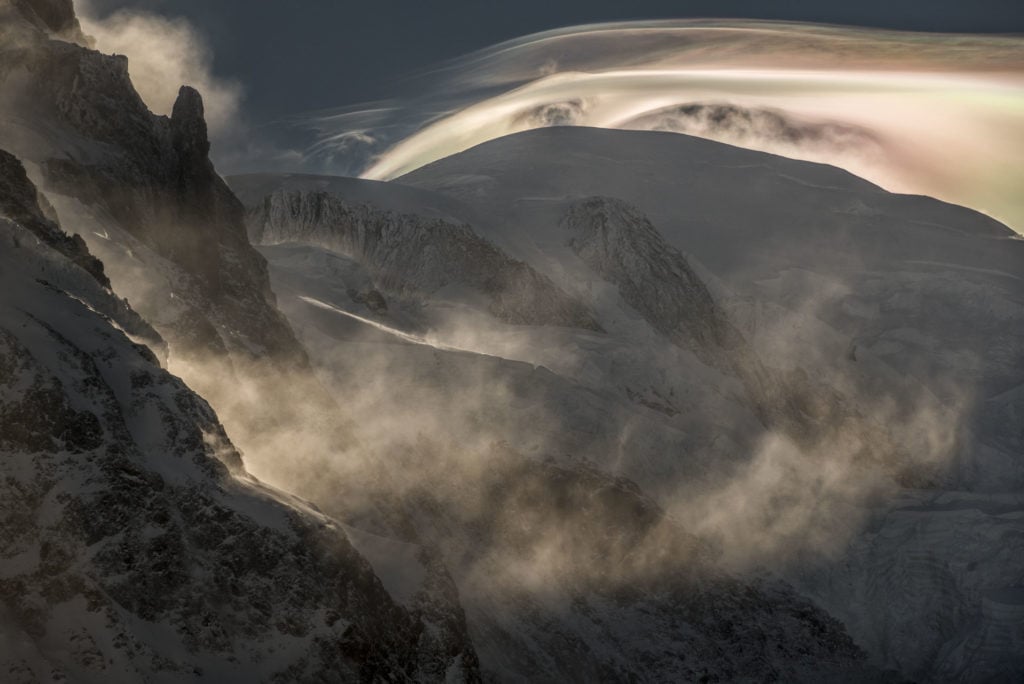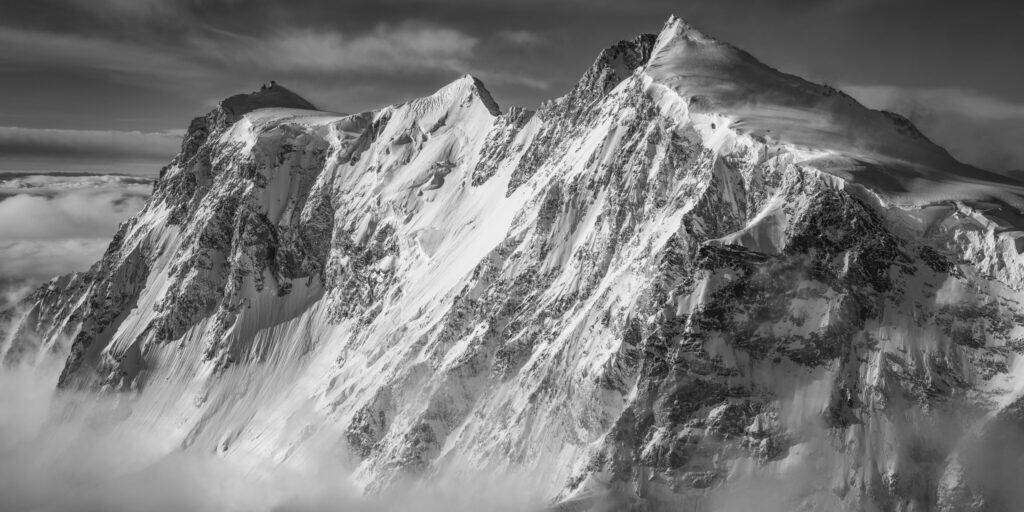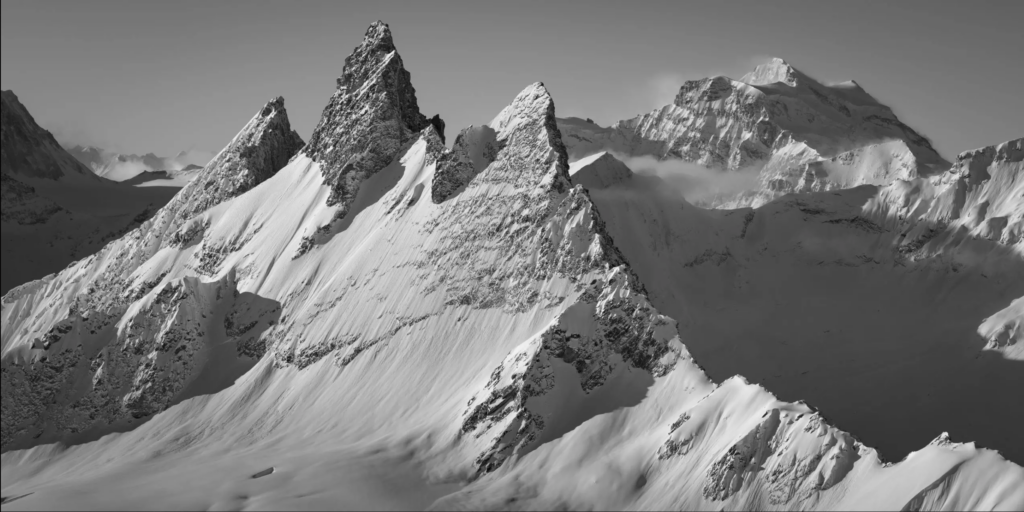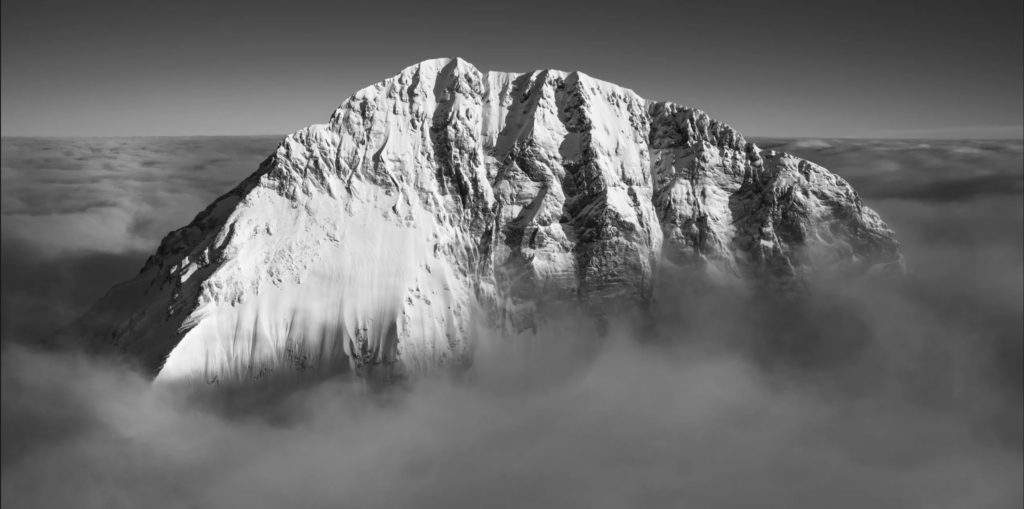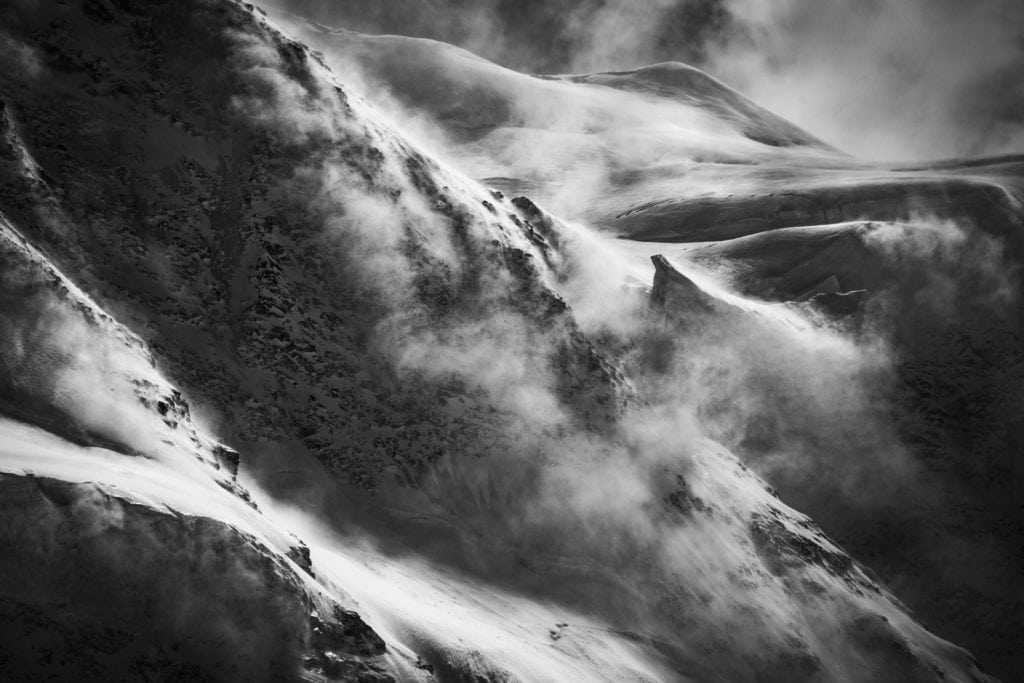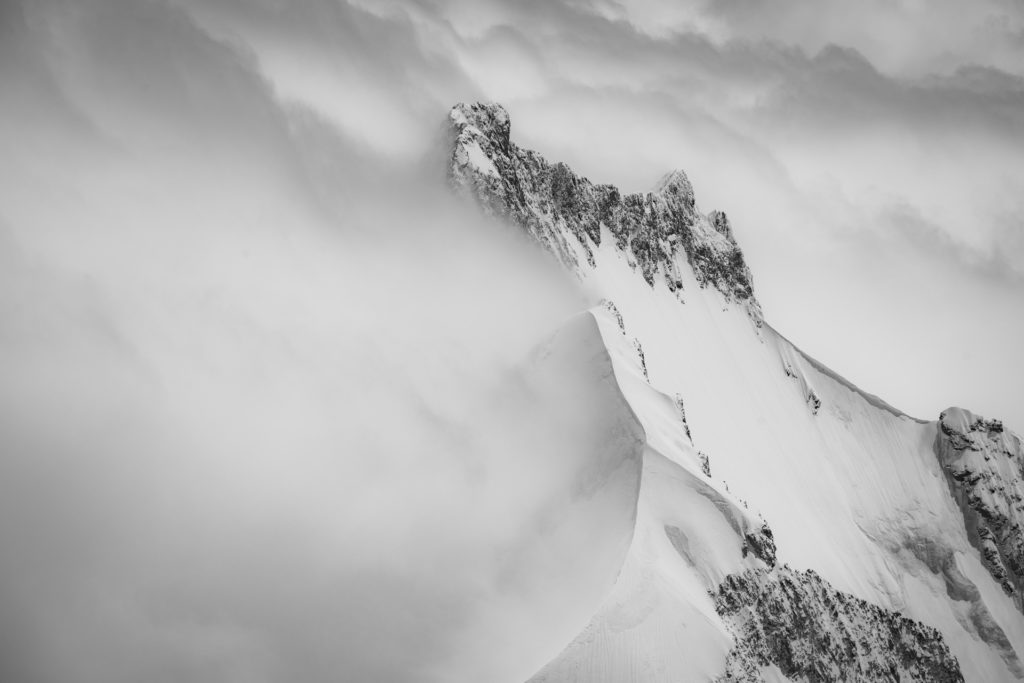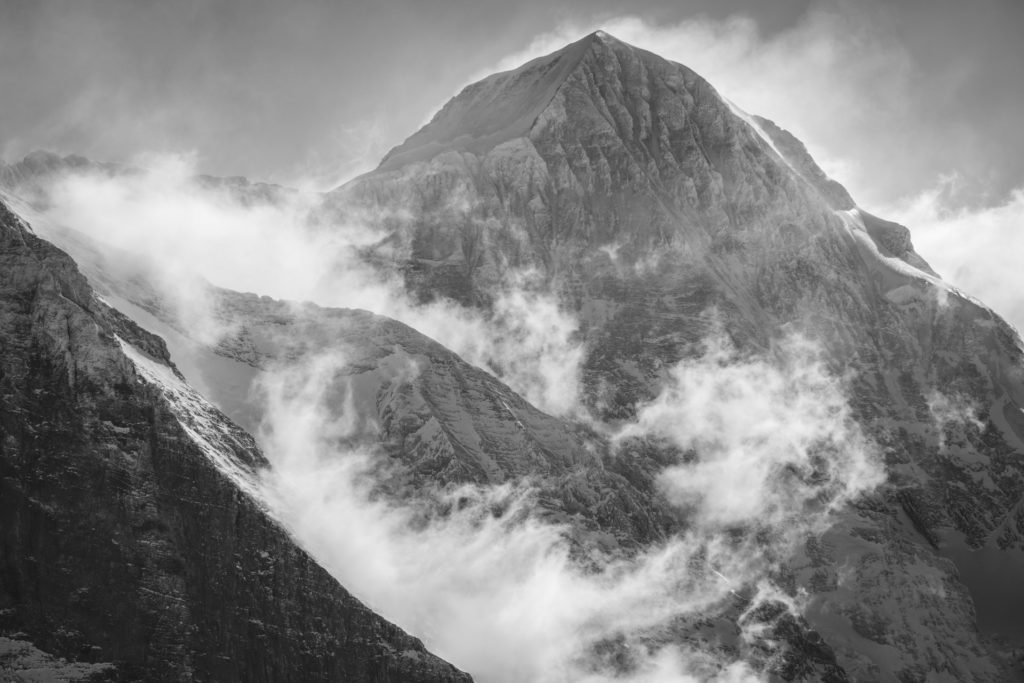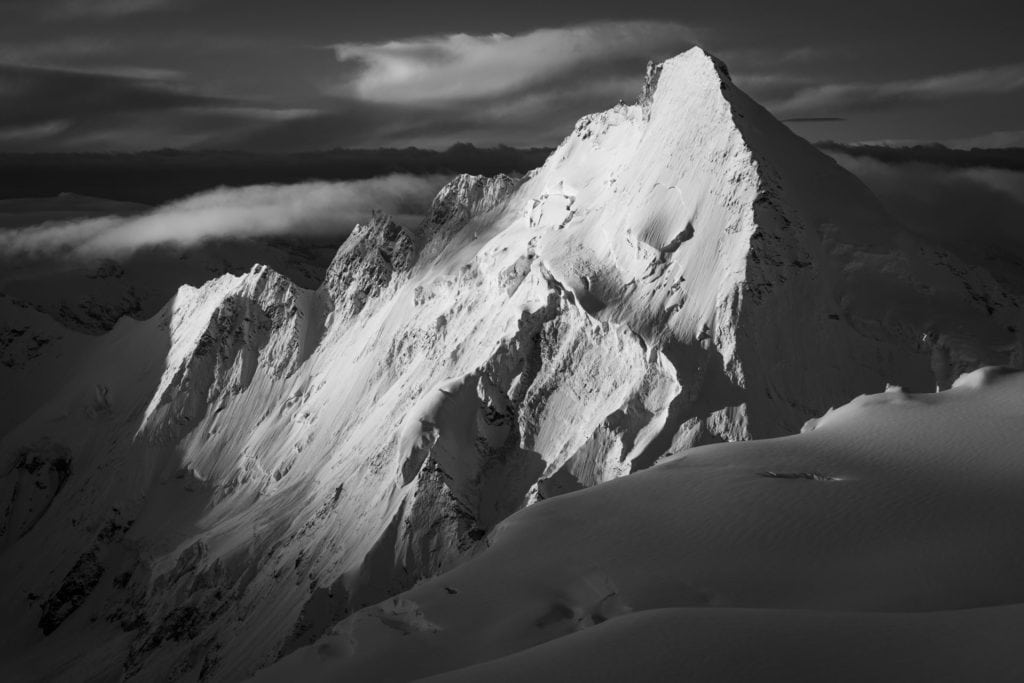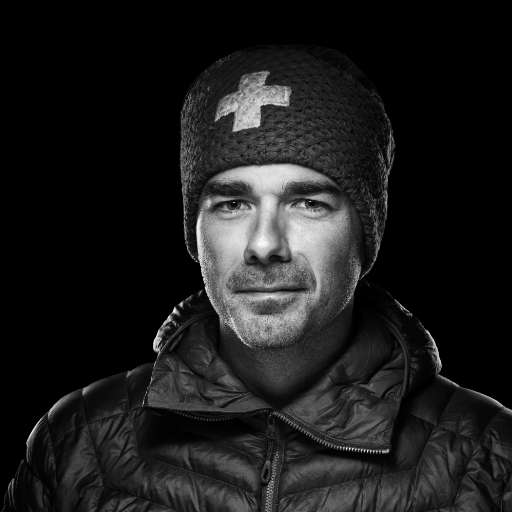An ice fortress dominating the Haute Route from Chamonix-Zermatt, Grand Combin brandishes its imposing peaks with supreme élan, the better to proclaim to the world the fleeting beauty of its eternal snows. A portrait of the mountain that nurtures us, Grand Combin, the giant of the Valais Alps.
Le Grand Combin : Ice giant in the Swiss Valais
On the borders of Val de Bagnes and Val d'Entremont, the Alps spread their gleaming wings of ice. The Combin massif's crests stand like the seven bastions of an impenetrable wall. Carried from west to east by the Petit Combin, Combin de Corbassière, Combin de Boveire, Combin de Meitin, Combin du Valsorey and Combin de la Tsessette, the Combin de Grafeneire or Grand Combin rises to an altitude of 4,314 metres in the canton of Valais. A celestial stopover between summits and Dent Blanche, it is one of the highest peaks in French-speaking Switzerland.
The southern flanks of the Combin offer an exceptional view from Mount Vélan. But it is undoubtedly from the refuge de Panossière that the mountain is at its most beautiful. To the north, grand Combin exults in its crystal reflections. Its colossal crests emerge from the Corbassière glacier, imperturbable yet so fragile. Echoing their sovereign, all the massif's peaks vibrate to the cadence of ice, its seracs and faults. And from the Boveire to the Grand Combin and Tsessette glaciers, the mountain shines. Himalaya de la Suisse is a hymn to the glacial beauty we dream of as eternal, but which we know is in peril.
Grand Combin : An exceptional mountain born of an age-old struggle
But beyond the opaline splendor of Grand Combin and its brothers, beneath the bleached bark of the mountain, listen carefully. For lurking in the shadows, the rocks reveal a grandiose epic. The story takes place nearly 100 million years ago, beneath the waters that separate Africa from Italy. Fiery and impulsive, the oceanic crust decided at the dawn of the world to conquer Europe. The Tsaté nappe, daughter of Thetys, wearing an armor of calcschist or lustrous schist, then progressed northwards. Until it met a formidable adversary. The Mont Fort nappe, too, wants to defend its empire. Cast in gneiss and schist, it defies its rival to get the better of it. The clash is inevitable, and from this battle of titans will spring the Alps. Hand-to-hand, the nappes fight a fierce battle. The earth's crust shakes, the lands overlap. The Tsaté nappe overcomes the Mont Fort nappe.
They look down on each other, both superimposed, when a terrible fold, a ground swell in the heart of the nascent Alps, reinvents the laws of an effervescent nature. The nappes topple over, folding in on themselves, giving the Mont Fort nappe the opportunity to cover the Tsaté nappe. An incredible volte-face puts an end to the battle. Turning upside down, the earth decided to catch its breath. The Grand Combin site becomes the stunning stage for a prodigious phenomenon in which the attacking slick is eternally submerged beneath the conquered land. While the Mont Fort nappe savours its victory from the Mauvoisin dam, the Tsaté nappe is revealed along the mountain's southern and eastern faces. And if you're curious enough to trace the decisive fold that changed the history of the Combin de Grafeneire, you'll find it on the south face of the Valais massif.
Le Grand Combin : First ascents of a legendary mountain
Sovereign of a sublime realm where serenity unites with light, Grand Combin yields millennia of tranquility to man's first steps. On July 20, 1857, Jouvence Bruchez, Benjamin Felley and Maurice Felley left the Panossière refuge and headed north up the mountain. They crossed the Corbassière glacier and climbed the dreaded Corridor, a sinister passage overhung by seracs that would claim the lives of many a mountaineer.
They have to be extremely vigilant, because they know that the slightest false step, the slightest careless error, and the mountain will get the better of them. Without warning, the ice could fall on them at any moment. But, seeing that they manage to overcome the ordeal to reach the Coast Wall, Grand Combin decides to open its arms to them. With great care, they avoided the ledges and crossed the ice to finally reach summit on the Aiguille du Croissant, 4259 metres above sea level. They thus inaugurated one of the classic routes to the summit of Grand Combin , but gave up on climbing the last few metres to the Combin de Grafeneire.
It wasn't until July 30, 1859, that a rope party made the first ascent of Grand Combin via the Col des Maisons Blanches and finally reached its highest point. The team comprised Charles Sainte-Claire Deville, Daniel, Emmanuel and Gaspard Balleys and Basile Dorsaz. In 1907, Marcel Kurz achieved the first ascent of Grand Combin on skis.
Grand Combin : Unforgettable expeditions to altitudes of over 4,000 metres
Since then, Grand Combin has welcomed the most daring skiers to its slopes. From the refuge de la Panossière, they take the normal winter route to summit via the couloir du Gardien. Then, if they wish, they can cross the dreaded Corridor on the way down.
But the northern slopes of Grand Combin are not the only ones to enjoy a glittering reputation. Valiant hikers on the Haute Route Chamonix-Zermatt approach summit from its southern flanks. From the cabane de Valsorey, they cross the plateau du Couloir under the benevolent gaze of the Combin du Valsorey. Then they turn their attention to the Col du Sonadon. Above them, the Combin de Grafeneire greets their advance, dominating the horizon with its immensity.
During the summer months, many hikers also want to climb Grand Combin via its normal route, which follows the south face. Leaving the Valsorey hut, they reach the Col de Meitin before joining the west ridge of the Combin de Grafeneire via the Combin du Valsorey. The most courageous continue their expedition to the Combin de la Tsessette, accomplishing the feat of traversing the ridges of the three highest Combins, at over 4000 metres altitude.
A vagrant alternative, the Isler-Gillioz route via the Plateau du Couloir is a mixed snow and rock route on the south face of the Combin du Valsorey. Exposed to the sun, this slope can only be climbed at dawn. Because when the mountain yields to the heat, its friable rock threatens to break away.
The final route over the splendours of Grand Combin, the route that crosses its south-east ridge finally flies away from the Mont Durand glacier to give us a breathtaking view of the Otemma glacier and the most beautiful mountains in the Valais Alps.
The Grand Combin, king of a massif of flamboyant peaks, pushes back the limits of millennia-old forces just as it urges us to preserve the Alps. For its brilliance is born of ice, the incomparable pedestal that elevates it to the coveted rank of the most absolute masterpieces.
